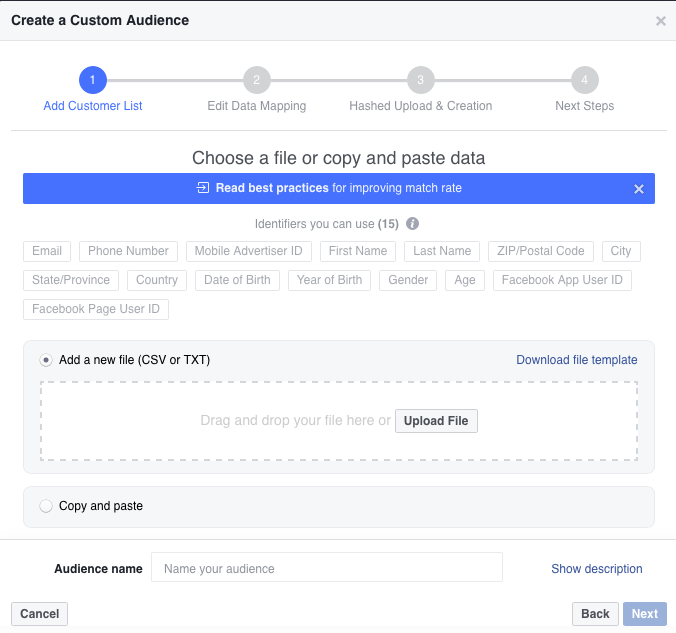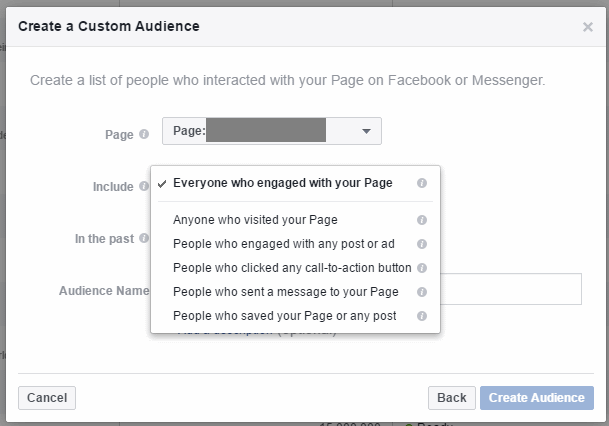It’s one thing to launch a Facebook advertising campaign; it’s another to optimize it for success. This is a platform with an audience that surpassed 2 billion monthly active users as of June 2017. Whether you look to a Facebook marketing agency for assistance or try to go it alone, you can’t just put a Facebook ad out there and hope for the best. No, you need to focus on a specific group of people that show the most interest in your product or service. These are the ones most likely to convert to paying customers.
Thankfully, advertising on Facebook is such a popular strategy because of the incredible audience targeting options available to marketers. By honing in on users that fall into groups ranging from Parents with preteens to those that have Used a travel app, social media marketers can become uber-specific in terms of to whom their ads appear and how. However, understanding which features of audience targeting to use and how best to use them is often easier said than done.
Don’t just take a shot in the dark with your Facebook marketing. Understand how to optimize your Facebook ad targeting and you can unlock the secret to 4.53X greater ROI and a 70% lower CPC.
Target People Who Already Expressed Interest
The best audience to begin targeting are those that have already showed an interest in your brand in some manner. These low-hanging fruit could result from having signed up for your newsletter, taken action on a form shared on Facebook, or done any one of a slew of other activities.
Once you’ve decided the action that prompts the ad to appear, you can set up a three-prong Custom Audience. This includes:
- Website Custom Audience
- Customer File Custom Audience
- Engagement on Facebook Custom Audience
Website Custom Audience
So let’s say you’re targeting people that signed up for your newsletter. When they sign up, they should be taken to a landing page confirming that they’ve registered. Using Website Custom Audience on Facebook, just input that URL after setting the Website Traffic option to “People who visit specific web pages”.
Customer File Custom Audience
In order to set up a Customer File Customer Audience using the same newsletter example, you can upload a CSV or other file that contains all of your subscribers’ emails. This option includes the ability to sync with a third-party ESP, keeping everything as accurate and up-to-date as possible.
Source: https://klientboost.com/ppc/facebook-custom-audience/

Given that people don’t always sing up with their true email, this option should always be used in conjunction with another Custom Audience method.
Engagement on Facebook Custom Audience
Finally, to target those that took action on something on your Facebook page (e.g. a post with a CTA to sign up for your newsletter), set up an Engagement Custom Audience. You can choose to target those that interacted with a video ad, lead advert, Canvas, or a post on your page.

Using all three of these Custom Audiences means you’re able to maximize the efficacy of your Facebook ad targeting. You’re still focusing on a specific audience based on an action they’ve taken (showing interest in your brand). However, you’re utilizing every tool at your disposal for reaching them.
Use Flex Targeting
In October 2015, Facebook launched a new feature for their audience targeting that introduced the ability to exclude or incorporate additional interests, behaviors, or demographics. Basically, this allows Facebook marketing to get a whole lot more specific.
Using the “Must Also Match” option of this feature has been shown to increase conversions up to 25%. It allows you to target people with shared, though not exactly the same, interests.
In this example, someone interested in basketball will be targeted with the same Facebook advertisement as those interested in volleyball. For a sports apparel company launching a new line of indoor sneakers, these would be useful audiences to target. People with an interest in not just one, but two sports that require the shoes are more motivated buyers.
Refine Based on Amount of Time Engaged
This rule applies to two circumstances, in particular: Time spent on your website and time spent engaged with a video.
Set up the targeting for the amount of time someone spends on your website. To do so, you’ll need to create a Website Custom Audience. Then, select the appropriate option from the dropdown menu. Unless your site experiences a truly massive amount of traffic, it’s wise to start by targeting the top 25%. You’ll still get a more engaged group to market on Facebook to, and the volume will remain high enough.
Once you decide to launch a Facebook video ad campaign, it’s important to get it in front of the right people. Target people based on their duration of time engaged with your Facebook video ad. You can set this up as an Engagement Custom Audience.
One of the options within this is Video. From there you can designate what percentage of the video a person must have watched to be targeted by your Facebook ad. The shorter the video, the higher the percentage of video completion you should select.
Segment Based on Tech-Savviness
People that are more comfortable and familiar with digital technology will have an easier time converting. The process of clicking through a Facebook advertisement and purchasing a product doesn’t seem daunting to those used to the action. However, it can easily deter those that are not.
To avoid this, set up your Custom Audience Behaviors to exclude those that are less likely to convert. This is even easier with the introduction of exclusionary behaviors tool. It allows you to select what characteristics are a dealbreaker.
Some suggestions for behaviors to exclude when marketing on Facebook include those with a 2G mobile network connection and people using Internet Explorer as their browser.
In just the same vein, include people whose behaviors demonstrate digital aptitude. This is especially useful if your product or service requires a deeper understanding of technology. These audiences could include Early Technology Adopters, people using an iOS operating system, and those with a 4G connection.
For all of the above tips to be successful, one of the most important things to remember with Facebook ad targeting is segmentation. Either split test on your own or hire a Facebook advertising agency to help out with this. Segmentation is crucial to test strategies and see what yields the best results, There are so many options when it comes to Facebook ad audience targeting. it’s in your best interest to try out different tools and change one aspect at a time to see what works best for your business.








